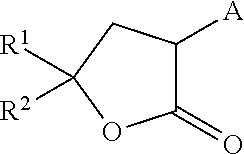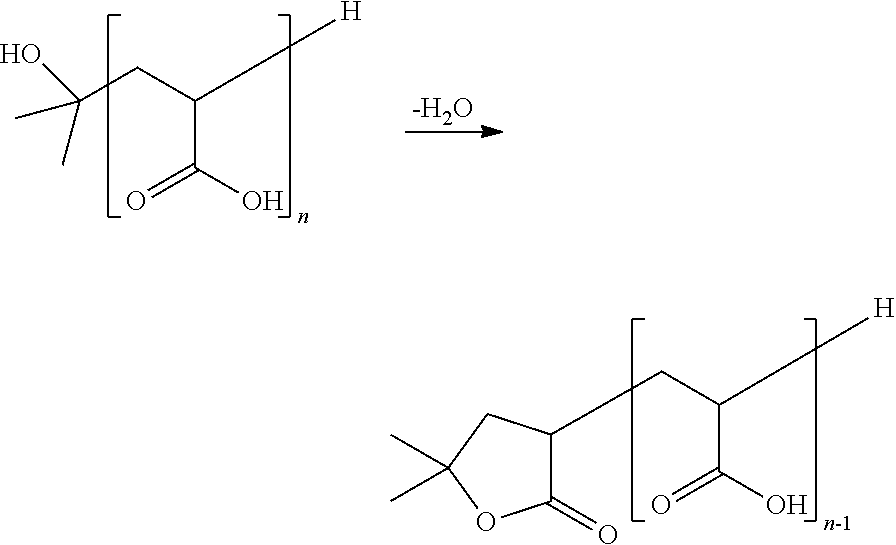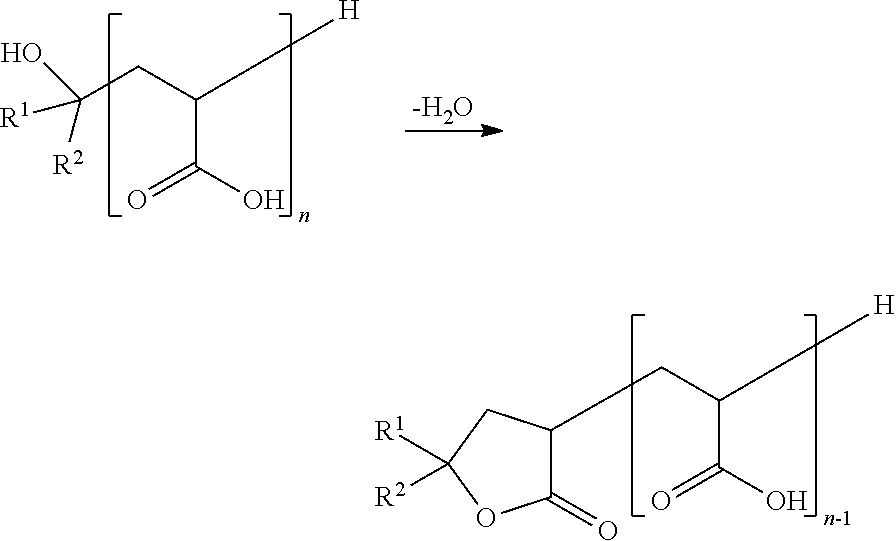Scale-reducing additive for automatic dishwashing systems
a technology of automatic dishwashing and additives, applied in the field of formulation, can solve the problem of not disclosing the composition containing a polymer with a lactone end group, and achieve the effect of reducing the formation of mixed inorganic deposits
- Summary
- Abstract
- Description
- Claims
- Application Information
AI Technical Summary
Benefits of technology
Problems solved by technology
Method used
Image
Examples
examples
Polymer Testing—
[0021]All polymers were tested for scale reduction by incorporating them as described below, with “Prototype 1F”, as described below and washing glasses for 5 cycles in a KENMORE QUIETGUARD dishwasher (solids added to main wash cycle) using water with 400 ppm hardness (2:1 Ca+2:Mg+2) at 130° F. (54.4° C.) with no food soil. Glasses were evaluated after 3 and 5 cycles using the scale from ASTM method 3556-85 (1=clean, 5=heavy film).
Results—
[0022]3.2 grams active trisodium salt of methylglycinediacetic were added to each experiment along with 28 grams of Formulation Protoype 1F.
[0023]
scaling ratingFormulation3 Cycles1) 28 grams Prototype 1F + 8 grams TRILON M2.47(40%) w / o polymer2) 28 grams Prototype 1F + 8 grams TRILON M2.43(40%) w / 1.6 grams liquid Comp. poly. A (50%)3) 28 grams Prototype 1F + 8 grams TRILON M2.80(40%) w / 1.78 grams liquid Comp. poly. B (45.53%)4) 28 grams Prototype 1F + 8 grams TRILON M2.33(40%) w / 2.02 grams liquid ANTIPREX A (39.7%)5) 28 grams Protot...
PUM
| Property | Measurement | Unit |
|---|---|---|
| wt % | aaaaa | aaaaa |
| wt % | aaaaa | aaaaa |
| wt % | aaaaa | aaaaa |
Abstract
Description
Claims
Application Information
 Login to View More
Login to View More - R&D
- Intellectual Property
- Life Sciences
- Materials
- Tech Scout
- Unparalleled Data Quality
- Higher Quality Content
- 60% Fewer Hallucinations
Browse by: Latest US Patents, China's latest patents, Technical Efficacy Thesaurus, Application Domain, Technology Topic, Popular Technical Reports.
© 2025 PatSnap. All rights reserved.Legal|Privacy policy|Modern Slavery Act Transparency Statement|Sitemap|About US| Contact US: help@patsnap.com



